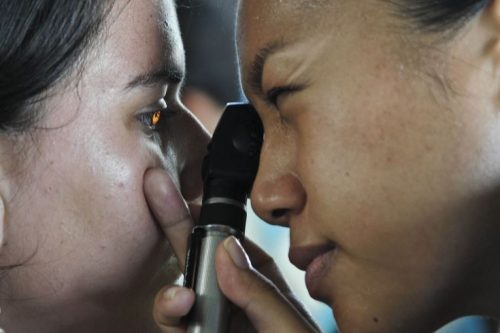
Strabismus, also known as crossed eyes, is a condition where one eye is turned ina direction that is different from the other eye.
Normally, the six muscles that support the eye work simultaneously and help the eye movement in the same direction. With strabismus, patients have problems with eye control and eye movement. They also have difficulty in keeping normal and standard ocular alignment.
Strabismus can be categorized depending on the direction in which the eye is turned:
- Inward turning, known as esotropia
- Outward turning known as exotropia
- Upward turning known as hypertropia
- Downward turning known as hypotropia
What Are The Causes Of Strabismus?
An abnormality in the neuromuscular control of the eye can lead to the medical condition of strabismus in people. Genetics is also involved and plays a major role in passing on this condition to their offspring. There can also be an abnormality or malfunction in the actual muscle of the eye. The following are some other causes that may lead to cross-eyes or strabismus:
- Cerebral palsy
- The Poor vision of one eye
- Refractive errors that have not been corrected
- Down syndrome
- Brain tumors
- Stroke – a leading cause of strabismus in adults
- Head injuries that damage the part of the brain responsible for eye movement or the nerves of the eyes
- Problems in the neurological or nervous system
- Overproduction of the thyroid hormone, also known as Graves’ disease
Symptoms Of Strabismus: When Do They Usually Appear?
By the time, a child reaches the age of 3 to 4 months, the eyes of the child should be able to focus on small objects. The eyes should also appear straight and well-aligned. By the age of six months, the focus of the eyes of the child should be both near and far.
Strabismus can occur at the age of infancy and in young children. However, older children and adults can also develop strabismus. An underlying neurological disorder could be the reason for sudden strabismus in older children and adults. You must immediately get in contact with your doctor if this happens.
What Is The Treatment Of Strabismus?
Treatment options for strabismus can be as follows:
- Wearing eyeglasses or contact lenses – Patients who have untreated refractive errors are recommended eyeglasses or contact lenses as it helps them focus on objects with less strain and keeps their eyes well-aligned and focused.
- Prism lenses – Prism lenses are special types of lenses that can bend the light entering the eye. These lenses help in reducing the amount of turning the eye does in order to look at objects.
- Eye exercises – You will be given several eye exercises in order to treat strabismus.
- Medications – Your eye doctor will prescribe several eye drops or ointments. These medications could also be combined, at times, with surgery in order to treat strabismus.
Other treatments may include wearing an eye patch in combination with the above-mentioned treatments. Eye muscle surgery can also be optimized in order to treat the issue of strabismus.
Interesting Related Article: “Prevalent Eye Diseases: A cause for better eye care“

